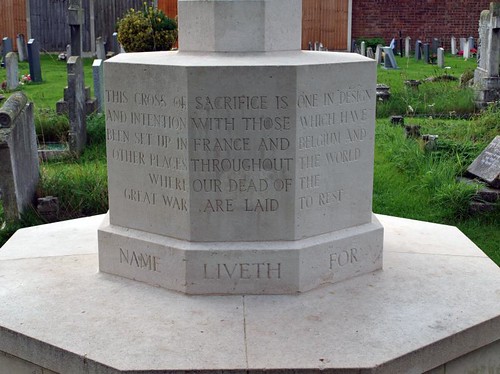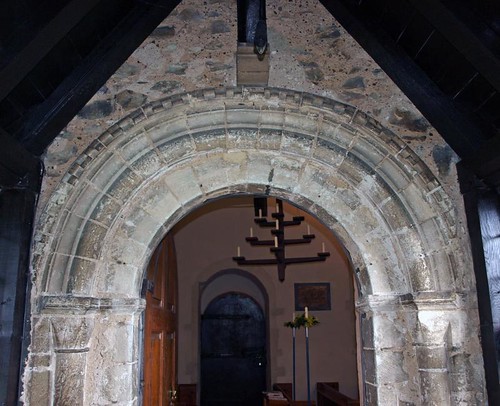ST ANDREW. Norman nave and chancel with original simple N doorway, slightly more elaborate S doorway (one order of colonnettes, roll-moulding in the arch and billet decoration of the hood-mould) and an original chancel N window. In addition some C13 lancets, a Perp nave S and a Perp chancel E window. Early C14 W tower with diagonal buttresses. C18 brick battlements. C15 timber porch. Inside the church the chancel arch is Norman, with one order of columns (scallop capitals) and in the arch a roll-moulding and a double zigzag. To the N and S of the arch curious recesses, more clearly recognizable on the S side. They consisted of a blank arch in the wall next to the chancel arch and, at right angles, a second blank arch in the N and S walls of the nave respectively. The S recess has shafts at the outer sides of the two arches and one corbel for the two inner sides. What was all this provided for? Side altars? Nave roof with tiebeams, on curved braces (tracery in the spandrels) and polygonal king-posts with capitals. - PLATE. Cup on short stem, with band of ornament, probably Elizabethan; Paten of 1638.
SHOEBURYNESS. We gaze from this low headland over the wide Thames estuary toward the hills of Sheppey in Kent, seeing midway the Nore lightship so eagerly longed for by mariners coming home. The Ness is famed for its School of Gunnery, and over its marshes and sands most of our important inventions in artillery have been tested. War and preparations for war have never long been absent here. Stone Age workshops and Roman kilns have yielded their secrets to the antiquarian, and we can trace the rampart thrown up by the Danes who retreated here from King Alfred’s men.
The church (at South Shoebury) is a pleasant little place into which we come by two Norman doorways, a trim avenue of chestnuts leading seaward from one porch. The nave and chancel have Norman work, the arch dividing them being carved with chevrons. There is a rare form of window with star-like ornament in the chancel wall. A muzzled bear and a lion-headed monster look down from a window on the passers-by.
The rector here at the beginning of the 16th century was Arthur Dent, a Puritan preacher whose book The Plain Man’s Pathway to Heaven was one of John Bunyan’s deepest influences. Bunyan’s first wife brought with her into the little cottage at Elstow this book and Bayly’s Practice of Piety, and Bunyan writes: “In these I should sometimes read with her, wherein I found some things that were pleasing to me.” The dialogue style in his Life and Death of Mr Badman is copied from Arthur Dent’s book, which is a conversation carried on all day under an oak by four people, an ignorant man being at last convinced of good by the answers of a learned man to questions by an honest man; the fourth man carps and cavils and thus gives the author scope for strong satire against the evils of his day. Published in 1601 Arthur Dent’s book was so popular that by 1637 it had reached its 24th edition.
The church (at South Shoebury) is a pleasant little place into which we come by two Norman doorways, a trim avenue of chestnuts leading seaward from one porch. The nave and chancel have Norman work, the arch dividing them being carved with chevrons. There is a rare form of window with star-like ornament in the chancel wall. A muzzled bear and a lion-headed monster look down from a window on the passers-by.
The rector here at the beginning of the 16th century was Arthur Dent, a Puritan preacher whose book The Plain Man’s Pathway to Heaven was one of John Bunyan’s deepest influences. Bunyan’s first wife brought with her into the little cottage at Elstow this book and Bayly’s Practice of Piety, and Bunyan writes: “In these I should sometimes read with her, wherein I found some things that were pleasing to me.” The dialogue style in his Life and Death of Mr Badman is copied from Arthur Dent’s book, which is a conversation carried on all day under an oak by four people, an ignorant man being at last convinced of good by the answers of a learned man to questions by an honest man; the fourth man carps and cavils and thus gives the author scope for strong satire against the evils of his day. Published in 1601 Arthur Dent’s book was so popular that by 1637 it had reached its 24th edition.



No comments:
Post a Comment